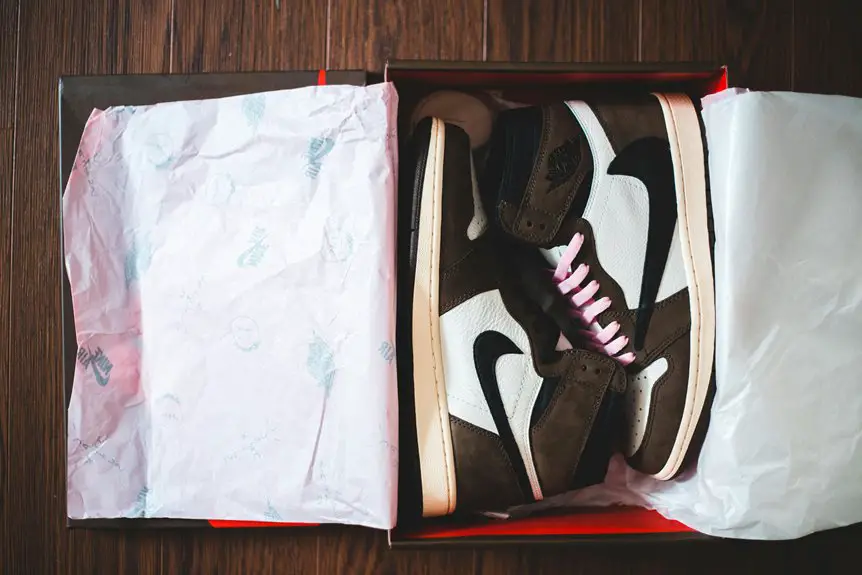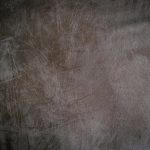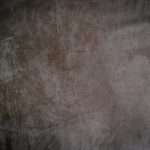Suede fabric is a soft, velvety leather made by buffing the inner surface of animal hides like lamb, goat, or cow. You get its unique texture through a tanning process that cleans, treats, and preserves the hides while keeping them flexible. It’s popular for stylish shoes, jackets, and bags but needs gentle care to avoid stains. If you want to explore its history, types, and sustainable alternatives, there’s much more to uncover.
Table of Contents
Key Takeaways
- Suede is a soft, velvety leather made by buffing the inner surface of animal hides like lamb, goat, and calf.
- Its signature texture comes from exposed fibers on the hide’s underside, giving a matte and fuzzy finish.
- The tanning process cleans, treats, and stabilizes hides with agents like chromium salts to preserve softness and durability.
- Suede is delicate, easily stained, and requires specialized care and gentle cleaning methods to maintain its quality.
- Originating in 19th-century France, suede is prized for its elegance and is commonly used in shoes, jackets, and bags.
Definition and Characteristics of Suede Fabric
Suede fabric is a type of leather known for its soft, velvety texture and matte finish. When you touch suede, you feel its distinctive nap, created by buffing the inner surface of animal hides, usually from lamb, goat, or calf.
This process exposes tiny fibers that give suede its characteristic softness and a slight fuzziness. Unlike smooth leather, suede isn’t shiny or stiff, making it more flexible but also more delicate.
You’ll notice it absorbs water and stains easily, so it requires careful handling. Because suede is porous, it breathes well, providing comfort in clothing and accessories.
Its unique combination of softness and subtle texture makes suede a popular choice for stylish shoes, jackets, and bags, adding a touch of elegance to your wardrobe.
Historical Background of Suede
The soft, velvety texture you appreciate today has roots stretching back centuries. Suede originated in 19th-century France, where artisans sought a softer alternative to traditional leather.
They developed a technique to sand the inner surface of animal hides, creating a fabric with a unique napped finish. Initially, suede was a luxury material, prized for its comfort and elegance.
Over time, its popularity spread across Europe and then worldwide, becoming a staple in fashion and upholstery. You’ll find that suede’s appeal lies in its combination of durability and softness, a quality that has stood the test of time.
Suede’s timeless charm endures, blending lasting durability with unmatched softness in fashion and home decor.
Understanding this history helps you appreciate why suede remains a favored fabric, blending craftsmanship tradition with modern style.
Types of Animal Hides Used for Suede
When you choose suede, you’re picking from a variety of animal hides, each with unique qualities.
Common sources include lamb, goat, and calf, which differ in softness, durability, and texture.
Understanding these characteristics helps you select the best suede for your needs.
Common Suede Animal Sources
Choosing the right animal hide plays an essential role in the quality and feel of suede fabric.
When selecting suede, you’ll find it primarily comes from a few common animals, each offering unique textures and durability. Knowing these sources helps you understand what you’re working with or buying.
Here are the most common suede animal sources:
- Cowhide: Durable and widely used for various suede goods.
- Lambskin: Soft and lightweight, ideal for delicate apparel.
- Goatskin: Offers a balance between softness and strength.
- Deerskin: Known for its supple texture and natural resilience.
Characteristics of Each Hide
Although suede can come from various animal hides, each type offers distinct characteristics that influence its texture, durability, and overall feel.
When you choose calfskin suede, expect a soft, fine nap with moderate durability, perfect for luxury items.
Lamb suede feels incredibly supple and smooth, but it’s less durable, so it suits delicate garments or accessories.
Goat suede tends to be more robust and slightly coarser, which means it withstands wear better and works well for everyday shoes or jackets.
Pig suede, often thicker and more textured, provides excellent toughness but has a rougher hand feel.
Understanding these differences helps you pick the right suede for your project, balancing softness and strength based on how you plan to use it.
Differences Between Suede and Other Leather Types
Since suede comes from the underside of animal hides, it feels softer and has a napped finish that sets it apart from other leather types like full-grain or top-grain leather, which use the outer surface and have a smoother, more durable texture.
Suede’s soft, napped surface contrasts with the smooth, durable outer layers of full-grain and top-grain leathers.
When you compare suede to other leathers, keep these key differences in mind:
- Texture: Suede is velvety and porous; full-grain is firm and tight-grained.
- Durability: Suede is less resistant to water and stains than top-grain leather.
- Appearance: Suede shows a matte finish, while other leathers often have a glossy sheen.
- Care: Suede requires specialized cleaning, unlike smoother leathers you can wipe down easily.
Understanding these differences helps you choose the right leather for your needs.
The Tanning Process for Suede Fabric
Before suede becomes the soft, textured fabric you recognize, the hides undergo a specialized tanning process that transforms them from raw material into durable leather.
First, the hides are cleaned and soaked to remove impurities. Then, they’re treated with tanning agents—usually chromium salts or vegetable tannins—that stabilize the collagen fibers, preventing decay and giving the leather strength.
This process also retains the hide’s flexibility, essential for suede’s characteristic softness. After tanning, the leather is thoroughly rinsed and dried.
You’ll find that this careful tanning guarantees the hide remains supple and ready for the next steps, like buffing or sanding, which develop suede’s unique surface.
Without this tanning process, the hide wouldn’t hold up or feel as luxurious as the suede fabric you enjoy.
Techniques for Creating the Suede Nap
Now that the leather is tanned, you’ll focus on creating the suede nap through sanding and buffing methods.
You’ll learn how the direction and texture of the nap affect the fabric’s look and feel.
Finally, you’ll explore finishing and softening processes that give suede its signature softness.
Sanding and Buffing Methods
Crafting the soft, velvety texture of suede starts with precise sanding and buffing techniques that lift and shape the fabric’s nap.
You begin by sanding the leather’s inner surface with fine abrasive materials to reveal the delicate fibers beneath. Then, buffing smooths and refines these fibers, creating the signature softness.
Here’s what you need to know about these methods:
- Mechanical sanding uses rotating drums or belts to evenly abrade the surface.
- Hand sanding gives more control for delicate or small pieces.
- Buffing wheels polish the fabric, enhancing its plush feel.
- Adjusting pressure and speed during sanding affects nap density and uniformity.
Mastering these steps guarantees that suede gains its inviting texture and durability.
Nap Direction and Texture
The way you manipulate the nap during sanding and buffing directly shapes suede’s final look and feel. By controlling nap direction, you create variations in texture and color that define suede’s unique softness and depth. You can brush the fibers uniformly or vary the direction to achieve different effects, impacting how light reflects off the surface.
| Nap Direction | Effect on Texture |
|---|---|
| Uniform | Smooth, consistent |
| Varied | Dynamic, textured |
| Upward | Plush, raised fibers |
| Downward | Sleek, flattened look |
| Crosswise | Enhanced depth, tactile |
Mastering nap direction helps you craft suede with desired visual appeal and tactile quality, making each piece distinct.
Finishing and Softening Processes
Although suede’s soft nap defines its appeal, achieving that texture requires careful finishing and softening processes.
Once the leather is split, you’ll need to refine the surface to bring out that signature velvety feel. Here’s what you do:
- Buffing: Gently abrade the flesh side to raise fibers and create the nap.
- Sanding: Use fine-grit sanding to smooth and even out the surface.
- Brushing: Employ brushes to lift and align the nap fibers for uniformity.
- Conditioning: Apply softening agents or oils to enhance flexibility and softness.
Common Uses of Suede in Fashion and Design
Softness and versatility make suede a favorite material in fashion and design. You’ll often see suede in stylish jackets and coats, where its texture adds warmth and sophistication.
It’s also popular for shoes and boots, giving your footwear a rich, luxurious feel. Designers love suede handbags and accessories because it combines durability with elegance.
In home decor, suede frequently appears in cushions, upholstery, and even wall hangings, bringing a cozy, tactile dimension to spaces. You’ll find suede used in gloves and hats, too, enhancing both comfort and style.
Whether you’re dressing up or decorating, suede offers a unique blend of softness and strength that fits various creative needs, making it a go-to fabric in both fashion and interior design.
Care and Maintenance of Suede Products
You’ll want to clean your suede carefully to keep it looking fresh, using gentle brushes and spot treatments.
Proper storage is key to preventing wrinkles and damage, so choose cool, dry places away from direct sunlight.
Cleaning Techniques
Because suede is delicate and prone to stains, you need to handle cleaning with care to maintain its texture and appearance.
Start by gently brushing your suede item with a suede brush to remove surface dirt and restore the nap. For small stains, use a suede eraser or a clean pencil eraser to lift marks without damaging the fabric.
If your suede gets wet, blot it with a clean cloth and let it air dry naturally—never use heat. For tougher stains or overall cleaning, consider using a suede cleaner designed specifically for the fabric.
Keep these tips in mind:
- Avoid water-based cleaning methods on suede.
- Always test cleaners on a hidden spot first.
- Brush regularly to prevent dirt buildup.
- Handle stains promptly for best results.
Storage Tips
Although suede is durable when cared for properly, improper storage can quickly damage its texture and appearance. You should store suede items in a cool, dry place away from direct sunlight to prevent fading.
Avoid plastic bags or airtight containers, as suede needs to breathe; instead, opt for cloth garment bags or breathable fabric covers. If you’re storing suede shoes or bags, stuff them with acid-free tissue paper to help maintain their shape.
Keep suede products separate from rough or sharp objects to prevent scuffs. Finally, hang suede jackets on wide, padded hangers to avoid stretching the shoulders.
Preventing Damage
To keep your suede looking its best, you need to handle it with care and perform regular maintenance. Suede’s delicate texture can easily absorb stains and moisture, so preventing damage is essential.
Here are some tips to protect your suede items:
- Avoid wearing suede in wet or muddy conditions to prevent water stains.
- Use a suede protector spray regularly to create a barrier against dirt and liquids.
- Clean minor dirt with a soft suede brush, brushing gently in one direction to restore the nap.
- Store suede in a cool, dry place away from direct sunlight to prevent fading and drying out.
Environmental Impact of Suede Production
When you consider suede production, its environmental impact often flies under the radar. You mightn’t realize that creating suede involves raising livestock, which contributes to deforestation, water consumption, and greenhouse gas emissions.
The tanning process, essential for turning raw hides into suede, uses chemicals that can pollute water if not managed properly. You should also know that energy-intensive machinery adds to the carbon footprint.
While suede’s luxurious texture appeals to many, its production demands resources and generates waste that affect ecosystems. By understanding these impacts, you can make more informed choices about the products you buy and how you care for them, ultimately encouraging more sustainable practices within the fashion industry.
Innovations and Alternatives to Traditional Suede
Since the environmental impact of traditional suede is significant, many innovators are developing sustainable alternatives that reduce harm without sacrificing style.
You can now find suede-like materials made from recycled and plant-based sources that look and feel just as luxurious. These options not only lessen your carbon footprint but also avoid animal cruelty.
When choosing alternatives, consider these innovations:
- Mushroom leather, crafted from mycelium, offers a biodegradable and durable option
- Recycled polyester suede mimics texture using post-consumer plastics
- Cork suede provides a lightweight, water-resistant, and eco-friendly choice
- Pineapple leather (Piñatex) uses pineapple leaf fibers, reducing agricultural waste
Frequently Asked Questions
Can Suede Be Waterproofed Effectively at Home?
You can waterproof suede at home, but it’s not a walk in the park. Use a specialized spray, apply evenly, and let it dry completely. Repeat as needed to keep water from soaking through.
How Does Humidity Affect Suede Fabric?
Humidity can make your suede fabric absorb moisture, causing stains and stiffness. You’ll want to keep it dry and store it in a cool, well-ventilated place to prevent damage and maintain its soft texture.
What Are the Best Storage Conditions for Suede Items?
You should store suede items in a cool, dry place with good air circulation. Avoid plastic bags, as they trap moisture. Use breathable fabric covers and keep them away from direct sunlight to prevent fading and damage.
Are There Synthetic Fabrics That Mimic Suede Texture?
Imagine soft, velvety fabric that feels just like suede beneath your fingers. You’ll find synthetic options like microsuede, which mimic that texture perfectly, offering durability and easy care without sacrificing suede’s signature softness.
Can Suede Cause Allergic Reactions in Sensitive Individuals?
Yes, suede can cause allergic reactions if you have sensitive skin. The animal proteins or chemicals used in tanning might irritate you, so it’s smart to test a small area before wearing or using suede products extensively.
- The Use of Nonwovens in Construction and Civil Engineering - July 11, 2025
- The Use of Nonwovens in Construction and Civil Engineering - July 11, 2025
- The Use of Nonwovens in Construction and Civil Engineering - July 11, 2025






